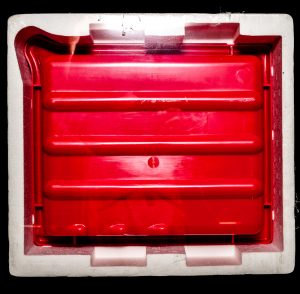No Products in the Cart
 c. Chemicals - get the Ilford liquid concentrates ( CE again ) in the convenient plastic bottles. Ilfosol 3, Ilfostop, Ilfofix. All good, all usable. All have accurate mixing instructions on the bottle. Don't drink any of them.
d. A clock to time the process. Get a cheap one from IKEA but remember that Swedish time is not measured in hours and minutes: They use elk and moose. You'll get used to it.
e. Running water ( bathroom sink ) and a shower stall to hang the finished film while it dries.
If you pop to your local library there will be a book on photography that will show the basic procedures for tank loading and development - there are little rituals like inverting the tanks or twirling the film reels that we all participate in. There is careful observation of solution temperature and time. There is care in washing and drying - all these make for a good negative at the end. You'll spoil a few before you get the hang of it, but once your routine is successful it can be so for decades.
There are also good storage systems for negatives - plastic sleeves or pages that mean you don't contaminate or lose the images you produced. And once you enter them into your digital stream they can last as long as nay other electronic image - but with the advantage that you always have the negative hard copy to return to.
How do you get the picture in front of you? Read more next time.
c. Chemicals - get the Ilford liquid concentrates ( CE again ) in the convenient plastic bottles. Ilfosol 3, Ilfostop, Ilfofix. All good, all usable. All have accurate mixing instructions on the bottle. Don't drink any of them.
d. A clock to time the process. Get a cheap one from IKEA but remember that Swedish time is not measured in hours and minutes: They use elk and moose. You'll get used to it.
e. Running water ( bathroom sink ) and a shower stall to hang the finished film while it dries.
If you pop to your local library there will be a book on photography that will show the basic procedures for tank loading and development - there are little rituals like inverting the tanks or twirling the film reels that we all participate in. There is careful observation of solution temperature and time. There is care in washing and drying - all these make for a good negative at the end. You'll spoil a few before you get the hang of it, but once your routine is successful it can be so for decades.
There are also good storage systems for negatives - plastic sleeves or pages that mean you don't contaminate or lose the images you produced. And once you enter them into your digital stream they can last as long as nay other electronic image - but with the advantage that you always have the negative hard copy to return to.
How do you get the picture in front of you? Read more next time.